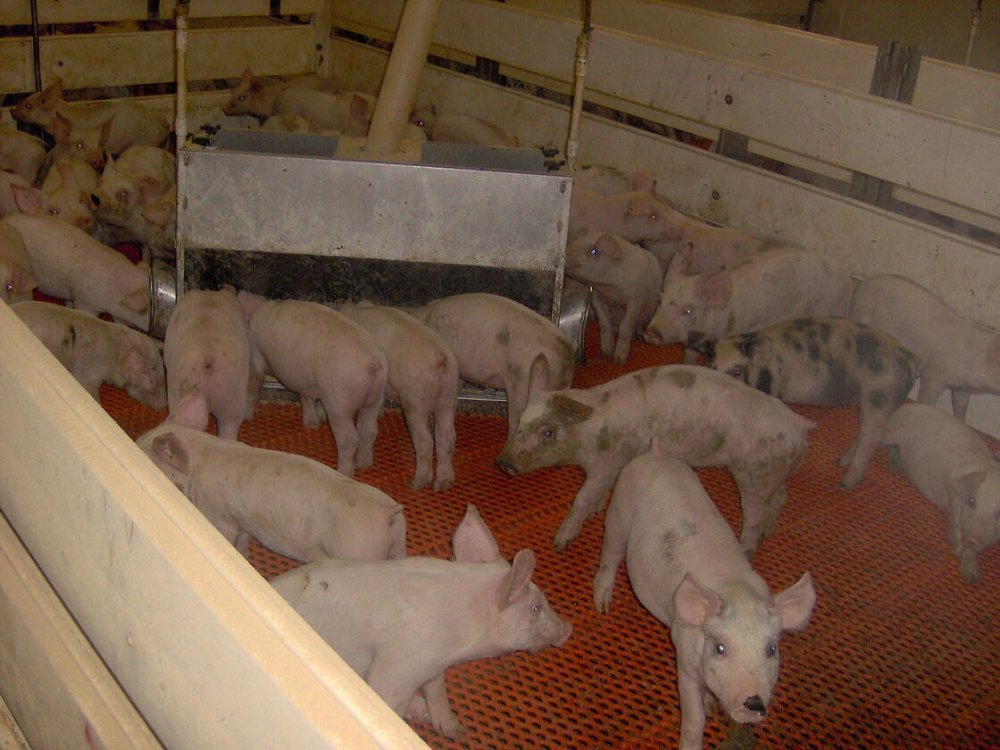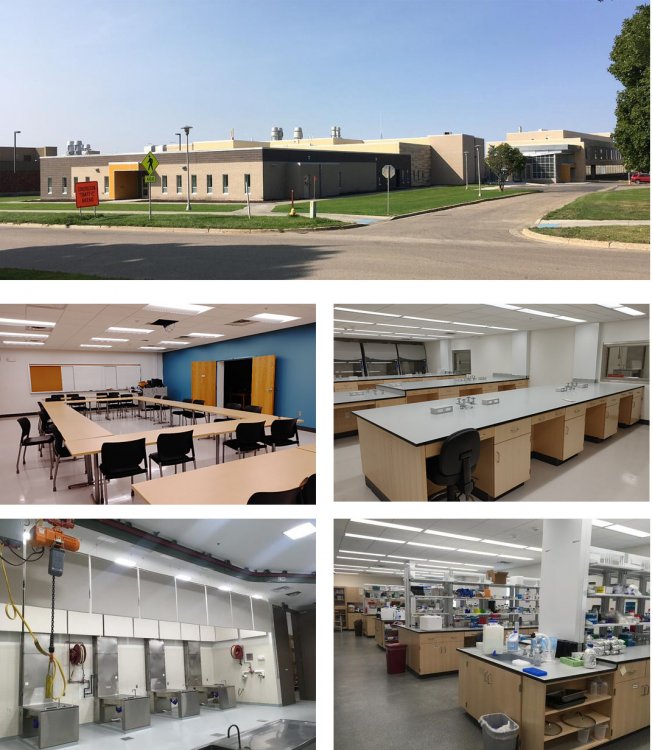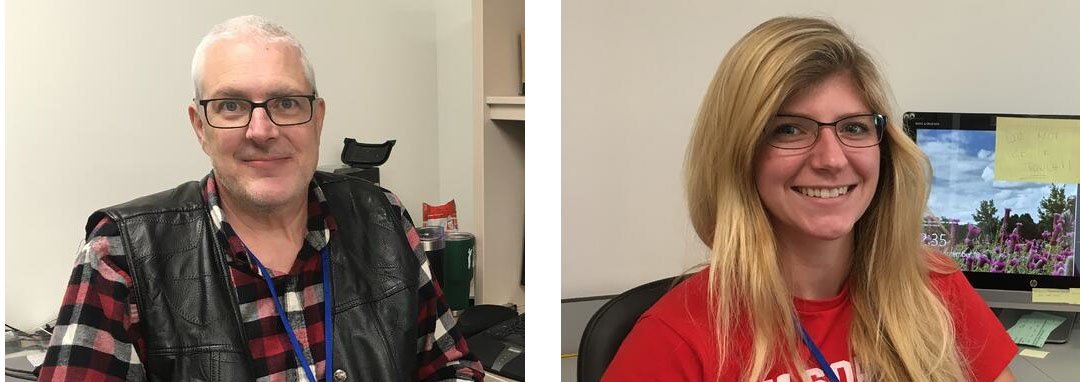Department of Veterinary and Biomedical Sciences
Enhancing Animal and Human Health through Service, Education and Research

Whether for students or for the public, service lies at the center of the Veterinary and Biomedical Sciences Department. Our undergraduate students benefit by receiving an educational foundation that makes them competitive applicants to colleges of veterinary medicine and our graduate students can sharpen their professional development with the help of a wealth of scientists willing to partner with them in research. The Veterinary and Biomedical Sciences Department also has laboratories that help expand service to the public. Prompt and accurate diagnosis of animal health problems is the role of the South Dakota Animal Research and Diagnostic Laboratory which is the only American Association of Veterinary Laboratory Diagnosticians (AAVLD) accredited laboratory in South Dakota. Another critical component of the Veterinary and Biomedical Sciences Department is a dynamic group of researchers who search for new ways to prevent and detect animal and human diseases.
The interaction of service, discovery and education that takes place within the Veterinary and Biomedical Sciences Department results in new knowledge, timely information, and students prepared for careers that make a difference for animals and people alike.
The Veterinary and Biomedical Sciences Department is a great place from which to launch your career. Give it a look today!

In addition, researchers at South Dakota State University, led by Drs. Jimmy Lin and Ben Hause will explore the role PPV2 infection plays in important diseases such as pneumonia, immune deficiency, reproductive failure and lameness, all causes of concern and lost productivity for pork producers. Other specific project objectives include development of research and diagnostic assays, including in situ hybridization and real-time PCR, for the detection, identification and differentiation of PPV1 and PPV2. SHIC's mission to protect the health of the US swine herd includes funding of this project, enabling work no one else is doing in the industry, then sharing the insights gained to benefit all.
During the project, researchers will ask what the current condition of PPV2 is on pig farms. They know, through evolution, new genetic and antigenic variants of parvovirus have arisen and occasionally achieve high frequency throughout the world. For example, a highly pathogenic canine parvovirus 2a recently emerged in dogs. This virus...

• Conversion of a storeroom and file room to classroom space for the Professional Program in Veterinary Medicine (PPVM), set to welcome its first students one year from now.
• Replacement of the hoist in the necropsy area and addition of downdraft tables to handle formalin fumes - preparing for the PPVM's anatomy courses and research necropsies.
• Modification and renovation of several old diagnostic lab areas to provide additional, highly functional and flexible space for growing research programs.
• Significant mechanical upgrades including new air handlers, exhaust fans and environmental control systems; refacing and insulation for improved energy efficiency and moisture control moisture penetration; and a new roof and sewer lines.
• New LED lighting throughout the area to provide improved lighting and energy efficiency.
• New flooring, paint and ceiling grid/tile in much of the building.
(Below) Photos of renovated spaces: Renovated classroom (top L) and teaching laboratory space (top R) for the PPVM program; new hoist and downdraft tables in old necropsy room for PPVM anatomy courses (bottom L); renovated research lab space being put to use (bottom R).

Darren, a native of Bismarck, North Dakota, gained experiences in advanced EMT work and, at nights, as a computer help desk technician fielding support calls from companies needing help connecting to the brand new technology called "the internet", among other needs. Studies at SDSU followed, where he started a part-time job with the networking department, eventually leading to a full-time computer support specialist position with the Biology/Microbiology Department. After 22 years there, Darren switched to the ADRDL, where he works closely with Jon Greseth supporting the laboratory information management system and other needs of the department. He enjoys time with his wife, a 7-year-old son, and 4-year-old daughter and considers "working with SDSU to be like working with family" as well.
Kelsey is a native of Pierre and active in the South Dakota National Guard where she was recently promoted to the rank of Sergeant, and returned from a 10-month deployment to Europe. She began her studies at SDSU in 2015 and recently graduated with an animal science degree. While a student, Kelsey worked on the ADRDL necropsy floor as well as at the Equine Teaching Facility; she currently runs her own farrier/equine massage business with an eventual goal to attend veterinary school. Kelsey's duties involve management and technical support for work on the necropsy floor, as well as work in the receiving department.
Welcome both Darren and Kelsey to their new positions at the ADRDL!